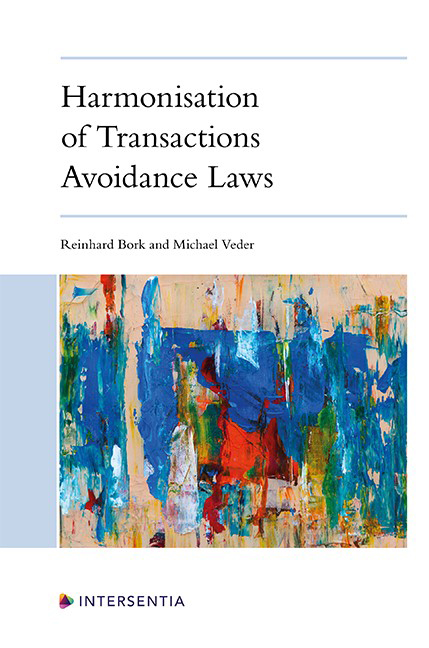Sweden
Published online by Cambridge University Press: 26 May 2022
Summary
A. INSOLVENCY LAW OF SWEDEN
The Bankruptcy Act and the Company Reorganisation Act are the two most important laws in Sweden on insolvency proceedings. The Swedish regulation on transaction avoidance can be found in chapter 4 of the Bankruptcy Act. The rules in chapter 4 of the Bankruptcy Act apply not only in bankruptcy proceedings but also in restructuring proceedings under the Company Reorganisation Act.
The transaction avoidance rules in chapter 4 of the Bankruptcy Act consist of a subjective general rule in sec. 5 (below referred to as the “Subjective General Avoidance Rule”) and of eight objective special rules in sec. 6–13 (below referred to as the “Objective Special Avoidance Rules”). The legal consequences of transaction avoidance are regulated in sec. 14 – 18. Standing for asserting claims on transaction avoidance, procedural limitation periods, etc., are regulated in sec. 19 – 21.
The Subjective General Avoidance Rule is applicable to “legal acts”. The Objective Special Avoidance Rules are applicable to specific types of transactions explicitly described in each special rule.
The Subjective General Avoidance Rule includes a subjective (mental) prerequisite (element) on the opponent’s side, see details in D below. The Objective Special Avoidance Rules do not include any subjective prerequisite.
B. SCOPE
Swedish transaction avoidance law applies to all kinds of debtors and opponents, no matter if the debtor or opponent is a legal entity, a natural person, an entrepreneur, or a consumer.
C. GENERAL PREREQUISITES
1) RELEVANT POINT IN TIME
A valid transaction made before or after the opening of the insolvency proceeding can be challenged as voidable. Transactions made after the opening of a bankruptcy proceeding are normally invalid, but an exception is made if the opponent during a short period after the opening of the proceeding did not know and did not have reasonable cause to assume that the debtor had been declared bankrupt.
2) DISADVANTAGEOUS FOR THE GENERAL BODY OF CREDITORS
Disadvantage for the general body of creditors is not necessary. It is sufficient that the transaction was disadvantageous for one single creditor. According to the Subjective General Avoidance Rule, the disadvantage can be either direct (immediate) or indirect. According to the Objective Special Avoidance Rules, the disadvantage must be direct (immediate).
- Type
- Chapter
- Information
- Harmonisation of Transactions Avoidance Laws , pp. 487 - 500Publisher: IntersentiaPrint publication year: 2022



